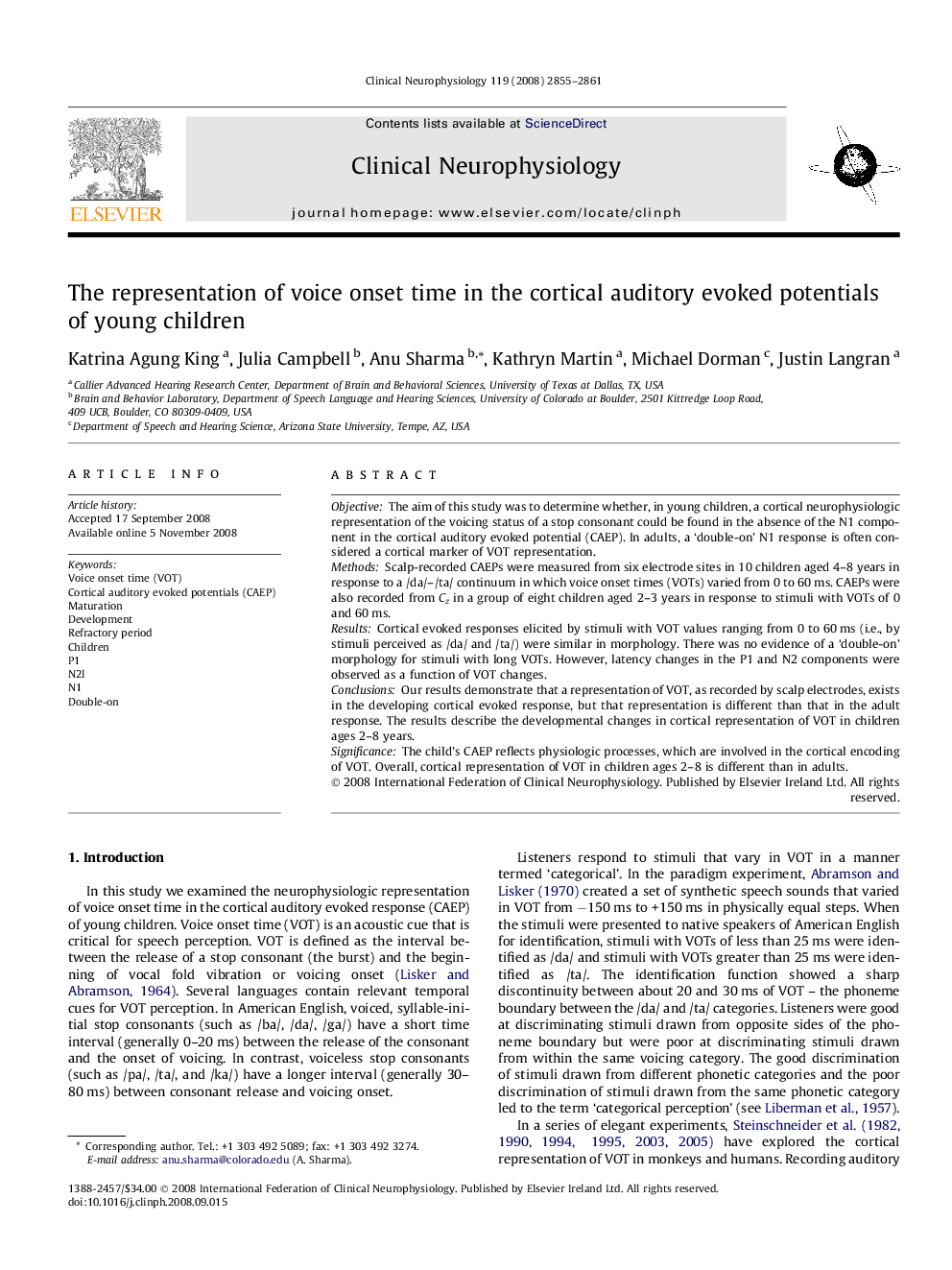| Article ID | Journal | Published Year | Pages | File Type |
|---|---|---|---|---|
| 3047570 | Clinical Neurophysiology | 2008 | 7 Pages |
ObjectiveThe aim of this study was to determine whether, in young children, a cortical neurophysiologic representation of the voicing status of a stop consonant could be found in the absence of the N1 component in the cortical auditory evoked potential (CAEP). In adults, a ‘double-on’ N1 response is often considered a cortical marker of VOT representation.MethodsScalp-recorded CAEPs were measured from six electrode sites in 10 children aged 4–8 years in response to a /da/–/ta/ continuum in which voice onset times (VOTs) varied from 0 to 60 ms. CAEPs were also recorded from Cz in a group of eight children aged 2–3 years in response to stimuli with VOTs of 0 and 60 ms.ResultsCortical evoked responses elicited by stimuli with VOT values ranging from 0 to 60 ms (i.e., by stimuli perceived as /da/ and /ta/) were similar in morphology. There was no evidence of a ‘double-on’ morphology for stimuli with long VOTs. However, latency changes in the P1 and N2 components were observed as a function of VOT changes.ConclusionsOur results demonstrate that a representation of VOT, as recorded by scalp electrodes, exists in the developing cortical evoked response, but that representation is different than that in the adult response. The results describe the developmental changes in cortical representation of VOT in children ages 2–8 years.SignificanceThe child’s CAEP reflects physiologic processes, which are involved in the cortical encoding of VOT. Overall, cortical representation of VOT in children ages 2–8 is different than in adults.
